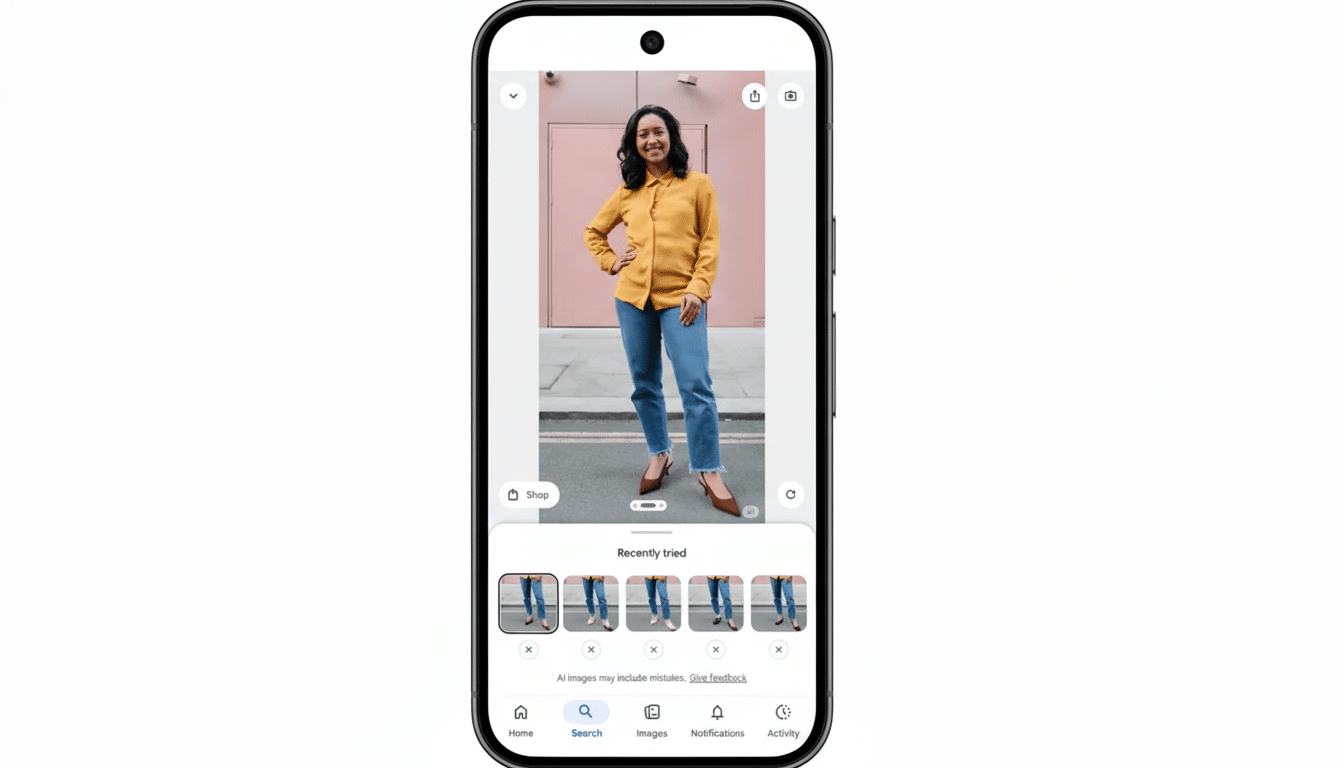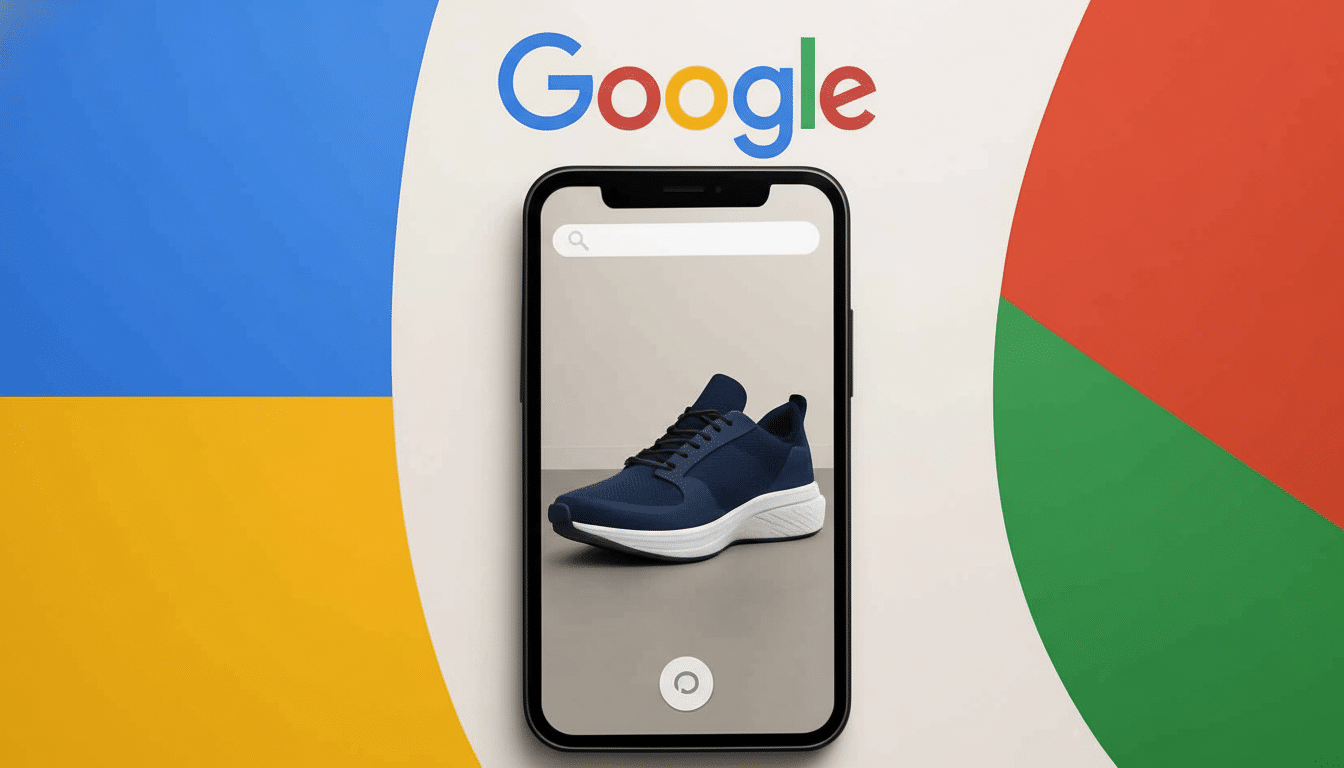Google is expanding access to its AI-powered shopping feature that lets people check out products with their own body image, adding shoe try-ons and extending it to browsers in Australia, Canada, and Japan. The update adds to the company’s virtual apparel try-on experience and brings sneakers and other types of footwear into the mix, straight from Google product listings.
No more second-guessing from studio photos: Shoppers can upload a full-length image and see the item rendered on an ultra-lifelike version of themselves by tapping Try It On on an eligible listing.
- What’s New in Google’s Virtual Try-On for Footwear
- Where Google’s virtual shoe try-on is rolling out
- How the new Google shoe virtual try-on actually works
- Why It Matters To Retailers And To Shoppers
- Competition and Google’s bigger bet on visual shopping
- What to watch next as Google expands virtual try-on

The expansion is aimed at addressing one of fashion e-commerce’s big open questions — how will this actually look on me? — before the buy button.
What’s New in Google’s Virtual Try-On for Footwear
Google’s previous attempts in virtual try-on for apparel went beyond static model shots to show how fabric drapes, stretches, and catches the light across various body shapes, using generative AI. The most recent update brings that realism to footwear, placing shoes at the right angle, scale, and depth relative to a user’s legs and the rest of an outfit.
Footwear is a far more difficult technical problem than it seems. Rendering must take into account occlusion (will the hem of your pants be partially covering the shoe?), perspective (are you turned slightly to one side?), and texture fidelity (matte suede vs. shiny leather). Google’s system combines these cues to slot the shoe believably into a personal photo, then spits out an image users can save or share.
Where Google’s virtual shoe try-on is rolling out
The feature is rolling out to Australia, Canada, and Japan, countries in which Google’s virtual try-on is already available. On participating product listings in Google Shopping experiences, shoppers will see the Try It On button. Note that availability may vary by participating retailer and supported device type, with more products to be added over time.
International expansion is important for AI shopping tools, because sizing conventions, style preferences, and product catalogs differ from country to country. Local rollout enables Google to fine-tune models and merchandising for each market and also understand how people use the feature in their native environment, instead of where it was first launched.
How the new Google shoe virtual try-on actually works
Shoppers begin with a Google product listing, click Try It On, and upload a full-length picture. After a brief render, the selected shoes appear on a digital version of their body at true scale. The output depends on the angle of the initial image; if the original pose is a three-quarter view, the shoes will appear from that perspective in 3D. If you’re wearing long trousers that overlap the shoes, the system will render the occlusion appropriately.

Behind the scenes, the system marries body and limb segmentation with generative rendering to maintain shadows, edges, and garment tangents. That helps avoid the awkward cut-and-paste look common in rudimentary overlays. Google also provides users with control over the output, offering options to save or share the image. Privacy and data policies, as always with such AI shopping tools, need to be taken into account: Users may want to consider their account settings and product descriptions in order to figure out how exactly images are being processed.
Why It Matters To Retailers And To Shoppers
So much of fashion buying is about visual confidence. The National Retail Federation says the return rate for online purchases still lingers in the high teens as a percentage of sales, especially for apparel because people are uncertain about fit and style. The idea behind virtual try-on is to address that by allowing people to see what proportion, silhouette, and color pairing will look like on their bodies before buying.
Consultancies like McKinsey and Deloitte have observed that immersive product visualization can lift conversion while cutting down returns, particularly for categories where fit and styling influence satisfaction. Even small gains add up at scale for stores that advertise in Google’s Shopping surfaces and brands attempting to assess the quality of visits.
Competition and Google’s bigger bet on visual shopping
Google is not alone. Amazon has a try-on experience for shoes in its shopping app, and Walmart has the Be Your Own Model feature that superimposes apparel on the image of a shopper. Snap has been expanding augmented reality try-ons through its camera platform, for example, and brands including Nike have trialed computer vision tools on sizing and fit.
Besides try-on, Google has also been experimenting with Doppl, an experimental app using the same generative technology to help people explore outfits a little more deeply. Doppl is about style discovery, and will even create short AI videos to illustrate how an item moves. That implies that Google is envisioning try-on as not only a conversion catalyst, but as part of a broader discovery layer where inspiration, personalization, and purchase meet.
What to watch next as Google expands virtual try-on
Google is now moving toward continuity across items — assembling full looks with tops, bottoms, and shoes in a single render — as well as improved movement cues for flowy fabrics and advanced materials. Look for more retailers to start offering the Try It On button as the results get better, and for greater transparency around AI imagery and inclusive support across body type and skin tone.
For shoppers, the upshot is this: You can now preview more shoes on your own body — not just clothes — in more places. For retailers, the message is that visual AI has shifted from a gimmick to table stakes in product discovery. As Google expands its virtual try-on capabilities, the “bar” in competitive product visualization continues to be lifted higher and higher.

